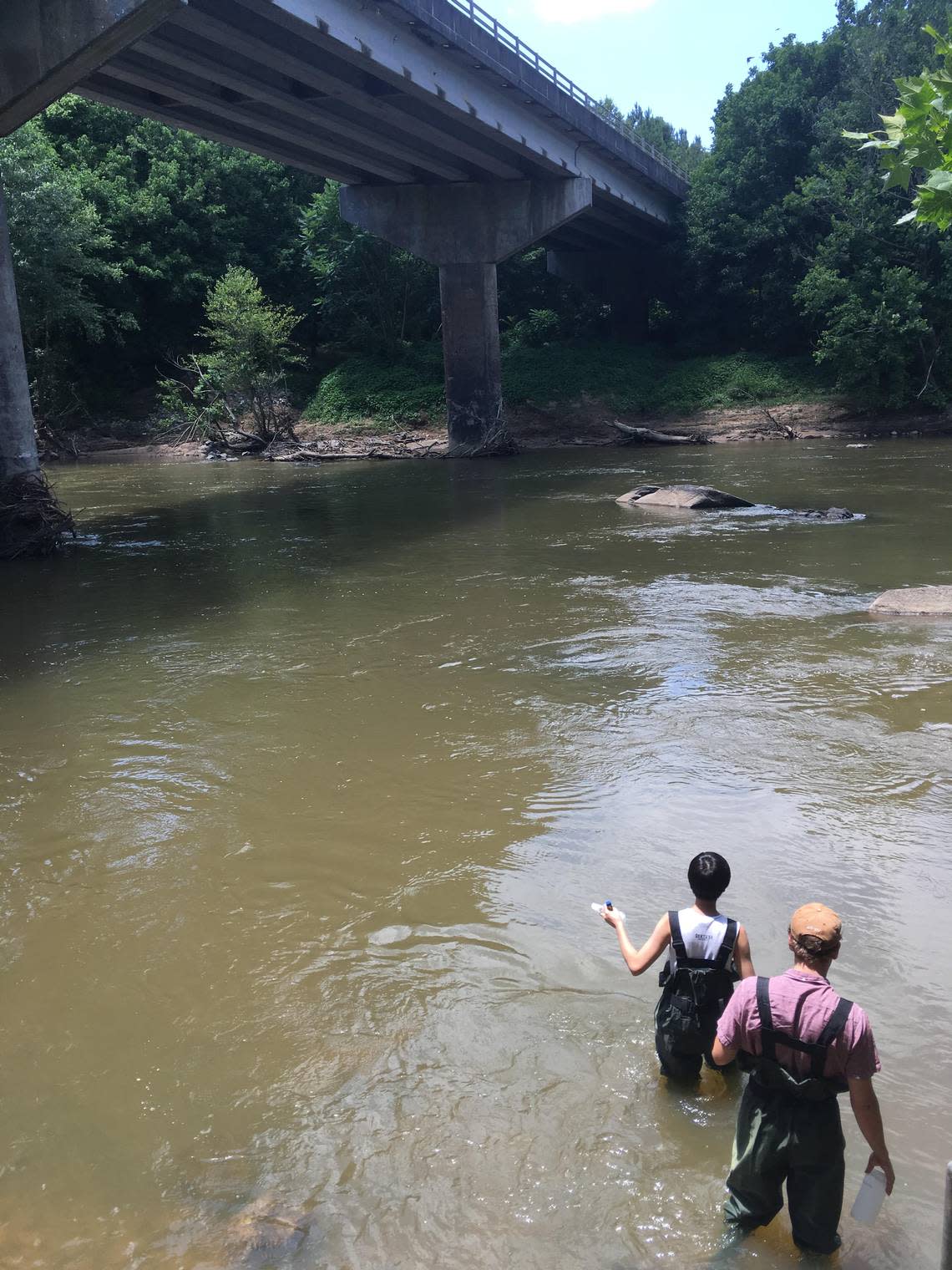Pittsboro says chemical ‘slug’ has passed the town, but is still testing its water

Water samples indicate that a 1,4-dioxane release reported on Friday has moved past the Town of Pittsboro’s water intake and concentrations in the town’s water are falling, according to a town spokesman.
“It appears the slug of 1,4 dioxane has passed by the Town, the portion that made it into our system is decreasing, and any remaining 1,4 dioxane is likely heavily diluted or moved downstream from the heavy rain over the weekend,” Colby Sawyer, a town spokesman, wrote in a news release.
Tests collected over the weekend showed levels of 1.02 parts per billion in the town’s raw drinking water and 1.96 ppb in its treated water. A sample taken Monday morning did not detect any 1,4-dioxane at the town’s intake on the Haw River and measured 1.66 ppb in treated water, according to the town’s news release.
Samples taken Tuesday continued to show no 1,4-dioxane at the intake, 1.06 ppb in treated water, 1.22 ppb at the Chatham Forest standpipe and 1.12 at ppb at the county’s ground storage tank that holds a million gallons of water.
“These additional results indicate that the Town’s response plan to 1,4 dioxane events successfully maintained our water supply while limiting the uptake of the substance into our water distribution system,” Sawyer wrote.
After the City of Burlington alerted Pittsboro last Wednesday that it had discovered a spike in 1,4-dioxane coming from one of its wastewater treatment plants, officials moved to limit the amount of water Pittsboro was drawing from the Haw River.
They cut Pittsboro’s intake to what was necessary to maintain the town’s water system while asking customers to avoid uses like power washing their homes, washing cars or running partial loads in dishwashers and washing machines. That request remains in place as of Monday evening, as the town is still drawing “minimal” levels of water from the Haw.
1,4-dioxane is a colorless liquid that mixes into water and is used in chemical manufacturing, as a solvent and in automotive coolant.
The Environmental Protection Agency has labeled it a “probable” human carcinogen and set a health advisory level of 35 ppb. North Carolina has set a target level of 0.35 ppb in surface water that is a drinking water source, like the Haw River.
Burlington has pointed to Apollo Chemical, a manufacturer that sends its wastewater to Burlington’s South Wastewater Treatment Plant, as the likely source of the latest 1,4-dioxane release. The city is working to finalize a wastewater permit that would require Apollo to create a 1,4-dioxane minimization plan and conduct daily testing.
Pittsboro is still conducting sampling and expects to see 1,4-dioxane levels fluctuate a bit in the town’s water tanks, particularly as the water that was drawn while the slug was moving down the Haw mixes with existing supplies.
The town is continuing to provide free reverse osmosis- and ultraviolet light-filtered water at Chatham Markeplace, 480 Hillsboro St. The Marketplace is asking that people bring their owns bottles and jugs, and the free water can be accessed with code 64261.
This story was produced with financial support from the Hartfield Foundation and Green South Foundation, in partnership with Journalism Funding Partners, as part of an independent journalism fellowship program. The N&O maintains full editorial control of the work. If you would like to help support local journalism, please consider signing up for a digital subscription, which you can do here.

